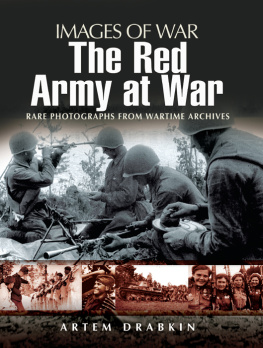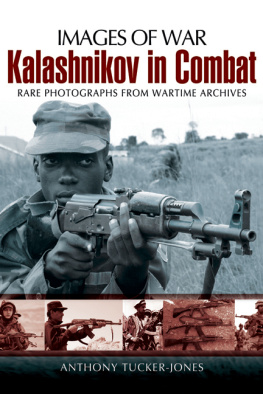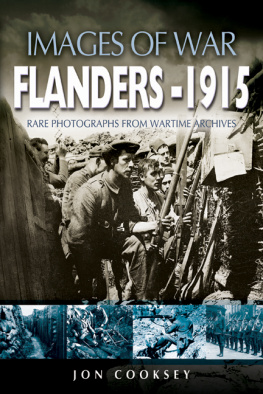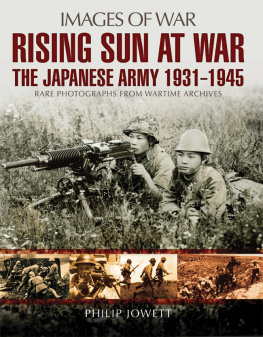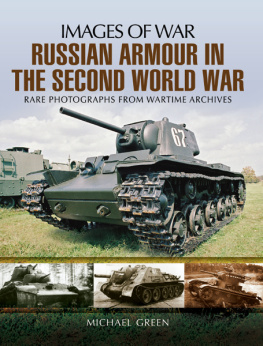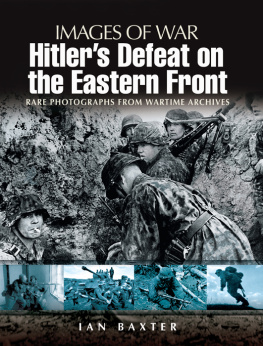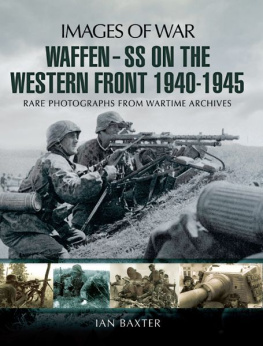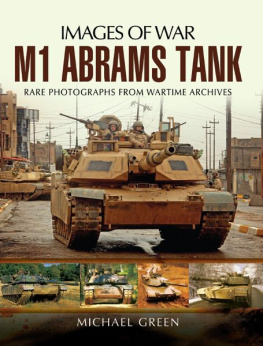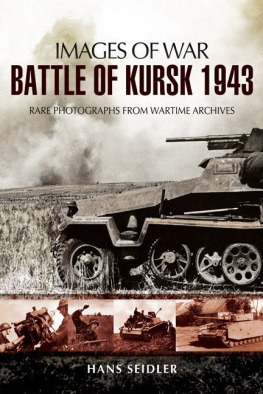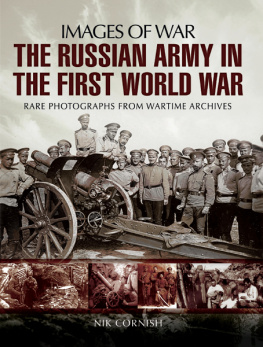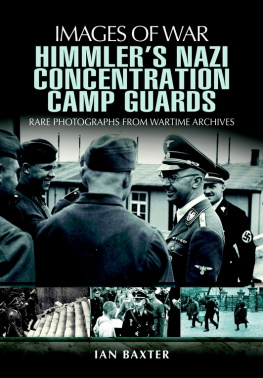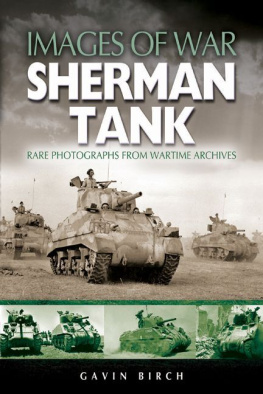
First published in Great Britain in 2010 by
Pen & Sword Military
an imprint of
Pen & Sword Books Ltd
47 Church Street, Barnsley
South Yorkshire
S70 2AS
Copyright (c) Artem Drabkin 2010
Photographs provided by the Russian State Documentary Film and Photograph Archive, the Artem Drabkin Archive and the archive of the Veterans' Committee of the Karelian Front.
ISBN 9781848840553
eISBN 9781844688845
PRC ISBN 9781844688852
The right of Artem Drabkin to be identified as Author of this Work has been asserted by him in accordance with the Copyright, Designs and Patents Act 1988.
A CIP catalogue record for this book is available from the British Library.
All rights reserved. No part of this book may be reproduced or transmitted in any form or by any means, electronic or mechanical including photocopying, recording or by any information storage and retrieval system, without permission from the Publisher in writing.
Typeset in 12pt GillSans Light by Pen & Sword Books Ltd., Barnsley
Printed and bound in Great Britain by CPI
Pen & Sword Books Ltd incorporates the imprints of Pen & Sword Aviation, Pen & Sword Maritime, Pen & Sword Military, Wharncliffe Local History, Pen and Sword Select, Pen and Sword Military Classics, Leo Cooper, Remember When, Seaforth Publishing and Frontline Publishing.
For a complete list of Pen & Sword titles please contact
PEN & SWORD BOOKS LIMITED
47 Church Street, Barnsley, South Yorkshire, S70 2AS, England
E-mail:
Website: www.pen-and-sword.co.uk
Contents
Chapter 1
Drafting
Before 1938 up to 80 per cent of Red Army units were formed on the territorial-militia basis. Menfolk capable of carrying arms were drafted for a limited period into territorial units, which made up about a half of the Army. The first service term was three months in a year followed by one month annually during a five-year period. The regular; non-territorial, half of the Army was formed by drafting, with a service term of two years. Later the territorial system was abolished and militia units were run on the same lines as the regulars.
Men who had reached the age of 18 were subject to drafting into military service. And young men who had completed no less than seven years of school could join military academies, which trained commanders for land troops. The educational qualification for aviation academies was higher: nine years of school education. One would have to pass exams and be tested by a medical board. Finally, would-be recruits were scrutinized by a credentials committee, which checked family records for political and ideological suitability. Army service was prestigious, for it provided a higher standard of living than civilian life, as well as the opportunity for learning professional skills.
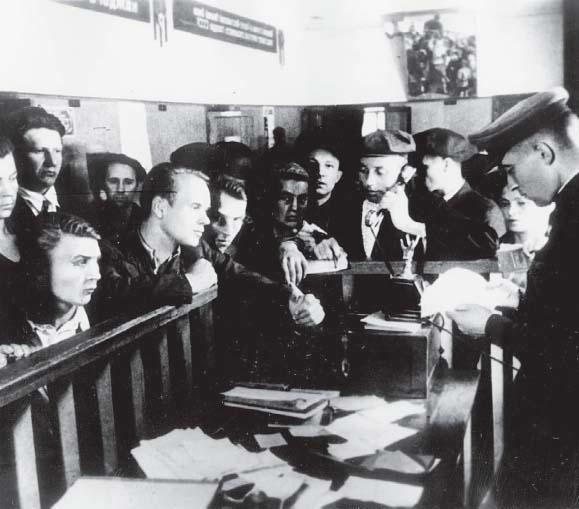
Volunteers registering for military service at an enlistment office during the first days of the war: The man in uniform is an orderly: he either considers applications for enlistment or accepts call-up papers from conscripts. The man with a telephone receiver in his hand apparently reports to his superiors on the attendance of volunteers and conscripts. The patriotic impulse was initially so great that military registration and enlistment offices couldn't cope with the enormous influx of volunteers. However, by autumn of 1941 this stream had dried up because of the protracted war and early Russian defeats.
Total mobilization was declared in the USSR with the outbreak of war. The first wave (young men born between 1918 and 1923) occurred in the summer of 1941. Those who worked at military production plants or as harvesters in the countryside were exempt. Dmitry Boulgakov from the Kursk Oblast [i.e. Region trans.] remembers:
On the second day after the announcement of the war the conscripts got their call-up papers, with the order to report to the selsovet [i.e. village council trans.]. The whole village was in tears seeing the menfolk marching off to the war. My elder brother who was a combine harvester operator would be called up only in July, as at first the combine operators were not to be drafted. In September they announced that all men born between 1890 and 1923 were to be called up, and would be evacuated to the south-east.
Simultaneously, volunteers were enlisted into fighter detachments and people's militia [i.e. paramilitary units similar to the Home Guard in Great Britain trans.]. Natalia Peshkova remembers:
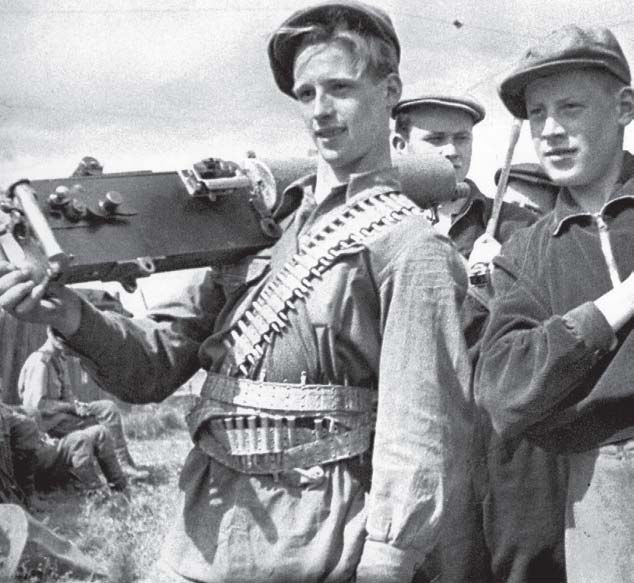
Young Leningrad workers undergoing military training. The lad with ammo belts round his chest holds the body of a Maxim machine gun. His neighbour on the right holds the weapon shield. The shoulder straps of the soldier in the background date this photo to no earlier than 1943.
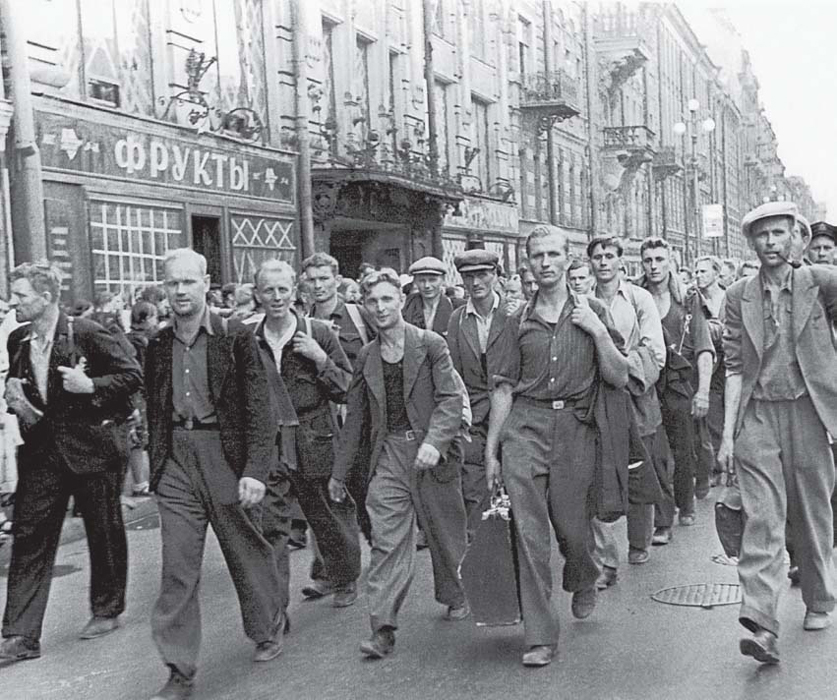
Conscripts in the streets of Leningrad, 1941. The windows of the shop selling Frukty (Fruits) are already sealed up with paper strips.
I had just graduated from school. We had a traditional ceremony and walked around Red Square. The war began next day. Well, I regarded myself as no less than Joan of Arc, so I immediately ran to the district Komsomol [i.e. Young Communists League trans.] committee and they sent me to a group of medics. This group was based in our school. We learned how to put on bandages and splints, how to give injections, etc. We were even taught to crawl flat on the ground in our school auditorium. At that time the militia units (DNO) were being formed in Moscow. I was sent to a rifle company of a DNO division as a medic.
Ion Degen tells a similar story:
I ran up to the voenkomat [i.e. military commissariat trans.] but no one was going to talk to me anywhere. I was shaking the air with exclamations about the duty of a Komsomol member, defence of the Motherland, heroes of the Civil War. The answer was brief: We don't take kids into the Army! But already on the tenth day of the war a volunteer fighter battalion consisting of Year 9-10 students of the city schools was raised by the Komsomol committee. Our platoon comprised Year 9 students with almost all of them born in 1924, and only three in 1925.
But exemption from service was still preserved at the military production plants. Michael Kuznetsov remembers: In the autumn a directive came: all men of such-and-such a year of birth to report to the voenkomat. I came up, but it turned out that I was exempt. They demanded my passport from me, but it had been taken away back at the plant and instead I'd been given an identity card with a red star. The voenkom [i.e. military commissar trans.] says: I can't draft you. I went out and said to the guy I'd come up with: That's it, I'm not drafted. Lesha Orekhov says: Goddamn it! Wait for half an hour, then put on my coat and hat, come in and say the plant's gone and you want to join the forces! So I did and was enlisted.
People were eager to fight for different reasons: love of the Motherland, revenge for the death of fallen kinfolk, or, as with Nikolay Smol'sky, a sense of duty and honour. Nikolay Smol'sky had graduated from an aviation school and found himself in a Reserve Aviation Regiment, in which, from his view, he might stay till the end of the war:
Next page
